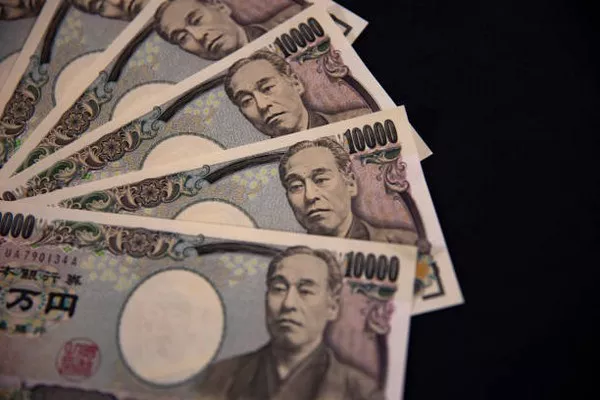Japan’s currency is steeped in history and tradition, with each coin bearing its own story and significance. Among Japan’s diverse range of coins, the 10 yen coin holds a special place, representing a blend of cultural heritage, economic stability, and artistic excellence. In this article, we delve into the history, design features, collector’s value, and cultural significance of Japan’s 10 yen coins, shedding light on their enduring appeal and relevance in the modern world.
A Brief History of Japan’s 10 Yen Coins
Japan’s modern currency system underwent significant transformations throughout its history, reflecting the country’s evolution from feudalism to modernization. The 10 yen coin, introduced in 1951, played a crucial role in Japan’s post-war economic recovery and stabilization. Initially minted in silver, the coin transitioned to a copper-nickel composition in 1967 to reduce production costs and meet the growing demand for small denomination coins.
Design Features of Japan’s 10 Yen Coins
Japan’s 10 yen coins feature a distinct design that reflects the country’s cultural heritage, natural beauty, and technological advancements. Here are some notable design features of Japan’s 10 yen coins:
Obverse Side:
Cherry Blossoms: The obverse side of the coin showcases a branch of cherry blossoms, Japan’s national flower, symbolizing renewal, beauty, and the ephemeral nature of life.
Denomination: The denomination “10 yen” is inscribed in Japanese characters along the outer edge of the coin, indicating its value.
Reverse Side:
Value in Arabic Numerals: The reverse side of the coin displays the numerical value “10” in Arabic numerals, providing a clear indication of its denomination.
Date of Issue: The year of issue is inscribed below the numerical value, indicating the year the coin was minted.
Paulownia Seal: The Paulownia seal, a symbol of the Japanese government, is featured on the reverse side, representing official authority and governance.
Collector’s Value and Rarity
While Japan’s 10 yen coin is primarily used in daily transactions, it also holds value among numismatists and collectors worldwide. Collectors are drawn to the coin’s historical significance, intricate design, and limited mintage, making it a sought-after addition to coin collections. Several factors contribute to the collector’s value and rarity of Japan’s 10 yen coins:
Limited Mintage: The 10 yen coin is minted in limited quantities each year, with new designs introduced periodically to commemorate special occasions and events. Coins from specific years or with unique design variations may command higher prices among collectors.
Condition: The condition of the coin, including its level of wear and preservation, can significantly impact its collector’s value. Uncirculated coins in pristine condition are highly valued by collectors and may fetch premium prices in the numismatic market.
Historical Significance: Coins that commemorate significant historical events, cultural milestones, or anniversaries may hold greater collector’s value due to their historical significance and rarity.
Design Variations: Variations in design, including mint marks, edge lettering, and special features, can make certain coins more desirable to collectors. Limited edition releases or coins with errors or anomalies may command higher prices in the collector’s market.
Cultural Significance and Symbolism
Japan’s 10 yen coin carries cultural significance and symbolism that reflect the country’s traditions, values, and artistic heritage. The coin’s design elements, such as the cherry blossoms and Paulownia seal, evoke themes of beauty, renewal, and national identity, resonating with Japanese culture and identity. Additionally, the use of traditional motifs and symbols serves as a reminder of Japan’s rich cultural legacy and enduring artistic heritage, fostering a sense of pride and connection among its people.
Investing in Japan’s 10 Yen Coins
For collectors and investors alike, Japan’s 10 yen coins offer a unique opportunity to acquire tangible assets with historical significance and intrinsic value. Whether seeking to build a diverse coin collection, commemorate Japan’s cultural heritage, or preserve wealth through numismatic investments, Japan’s 10 yen coins present an attractive option for discerning enthusiasts. With their timeless beauty, cultural resonance, and limited availability, these coins continue to captivate collectors and investors worldwide, embodying the enduring allure of Japan’s numismatic heritage.
FAQs
1. Are Japan’s 10 yen coins made of precious metal?
No, Japan’s 10 yen coins are primarily composed of copper and nickel, with a copper-nickel alloy. While they do not contain precious metals like gold or silver, their collector’s value lies in their design, rarity, and historical significance.
2. How often does Japan release new designs of the 10 yen coin?
Japan typically releases new designs of the 10 yen coin periodically to commemorate special events, anniversaries, or cultural milestones. These new designs may feature different motifs, symbols, or landmarks reflecting the theme of the occasion.
3. Can I use Japan’s 10 yen coins outside of Japan?
While Japan’s 10 yen coins are legal tender within Japan, they may not be accepted for transactions outside of the country. It is advisable to exchange them for local currency before traveling to avoid any inconvenience.
4. Are there any rare or valuable editions of Japan’s 10 yen coins?
Yes, certain editions of Japan’s 10 yen coins, particularly those with unique design variations, minting errors, or historical significance, may be considered rare and valuable among collectors. Coins in pristine condition or from specific years may also command higher prices in the numismatic market.
5. What is the significance of the cherry blossoms on Japan’s 10 yen coins?
The cherry blossoms hold deep cultural significance in Japan, symbolizing renewal, beauty, and the transient nature of life. Their inclusion on Japan’s 10 yen coins reflects the country’s reverence for nature, tradition, and the changing seasons.


